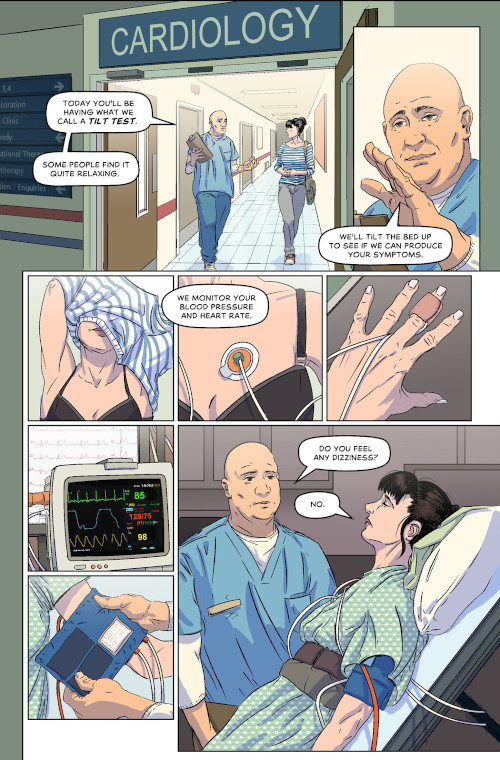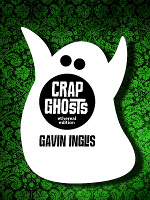Blog
Not There
5th February 2021
A comic book about Functional Neurological Disorder.In 2017 I began an arts residency in the Department of Clinical Neurosciences at the Western General Hospital. It was a productive period which produced new fiction, research into a pioneering Edinburgh neurosurgeon, a story set to smells, a Book Festival show and more.

But there was something missing. Seeing the people working there — technicians, neurologists, occupational health, surgeons, nurses — I felt a need to contribute somehow. Of course neuroscience is not a discipline where you can become useful quickly, and my early reading drove that home.
I had lunch with Professor Peter Sandercock and he suggested I look into the specialised area of Functional Neurological Disorder (FND). This is a condition where there is a problem with the functioning of the nervous system: how the brain and body send and receive messages, rather than detectable damage caused by disease. This makes an FND difficult to diagnose and sometimes means patients struggle to get help. Symptoms vary from visual disturbances to uncontrollable muscle contractions.
Understanding your FND is an important step towards tackling it. This was part of the clinical work at DCN — and perhaps something I could help with.
Time for more research. I met Professor Jon Stone, a leading figure in the field who turned out to be exceptionally supportive and patient throughout the process. His site neurosymptoms.org is a superb resource for understanding FNDs. I attended a three-day conference and understood more of the papers than I expected to. It let me meet some patients and see the breadth of work being done on FND. Finally, as with Hana Feels, I went deep on patients’ own accounts of their experience.
At first I planned to write a radio play and try to place it with the BBC. But there is already a powerful FND play, Still Ill, which I got the chance to see at the New Diorama Theatre. For a therapeutic contribution, what was needed was something that patients could access immediately, while they were struggling to understand their condition. So I came up with the idea of a short graphic novel; a comic.
I created Steph, a woman who suffers dissociative attacks and blacks out in public. Dissociative attacks are one of the more common FND symptoms. They let me focus on the effect her condition had on Steph’s public and private life. I wrote the draft script in a few days, suspecting it would change throughout the process.
For visuals, I approached Fin Cramb, an Edinburgh artist known for his atmospheric colour work. He was full of strong ideas about layout and imagery. Over meetings which revolved around chips and blue cheese sauce, we worked things out. Three of those early pages were exhibited at the City Arts Centre. Two pages were added to the script, expanding the range of tests Steph went through.

I decided to letter the pages myself. This is a separate job, an art with its own conventions and subtleties. I wanted to pick up the skill, and also thought it might make me a better comics writer if I got my hands dirty with placement. It was slow and painstaking, but it was fascinating too — lettering is the moment when the pages shift from a visual representation to the live and breathing story you envisaged. Often in trying to fit a balloon to a small corner, I would realise it didn’t need all its word content; and once or twice I realised Fin’s art told the story without needing any additional words.
Every creative stage was a learning process, and we often asked advice from NHS staff. Besides our neurological experts, thanks are due to a psychiatrist, MRI techs, and a paramedic. Our feedback ranged from nuances of consultation language to getting the paramedic character’s boots correct!
There will be some physical copies of Not There eventually, and more digital distribution. But for now you can download Not There as a PDF from Ginkgo Projects.
